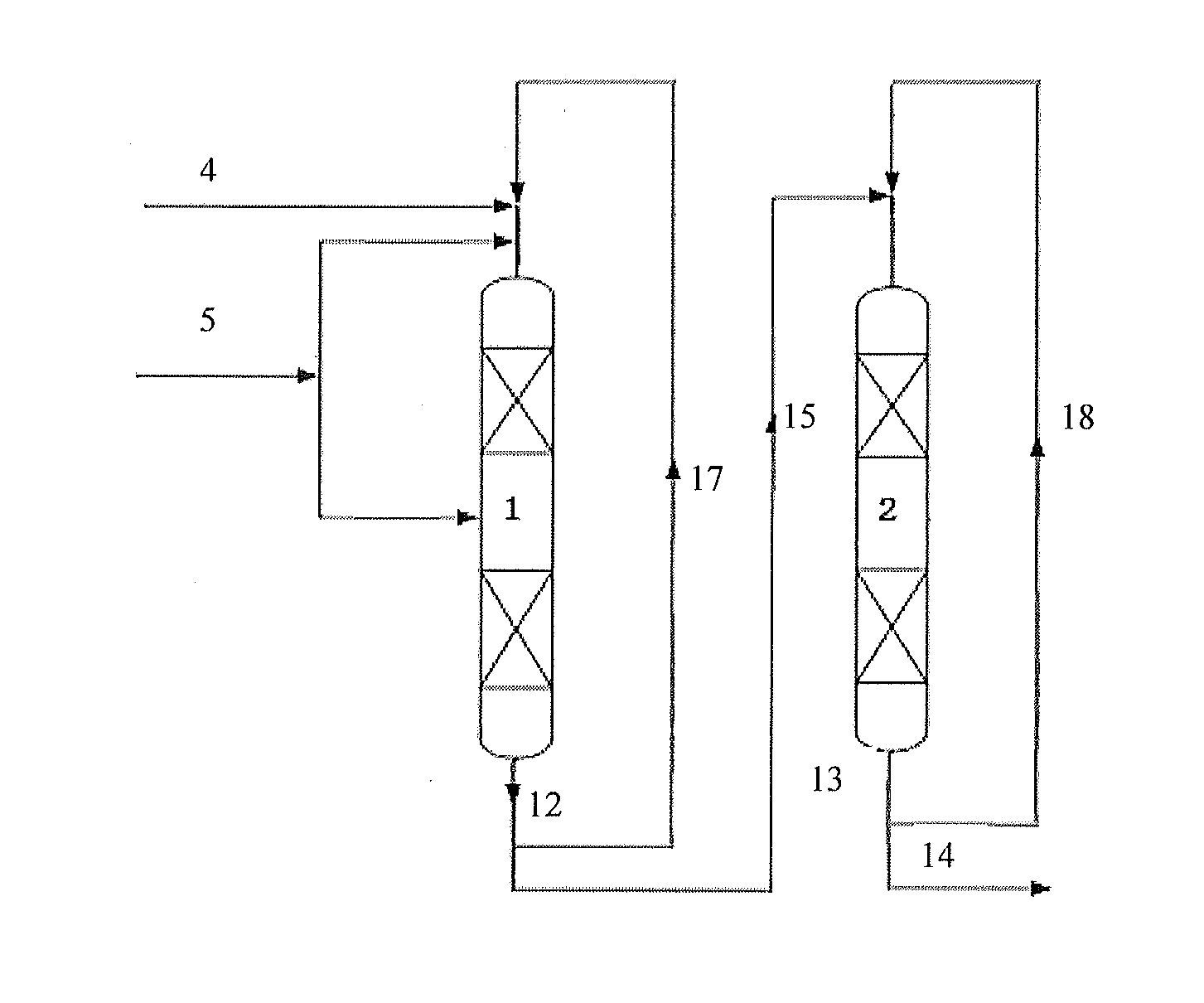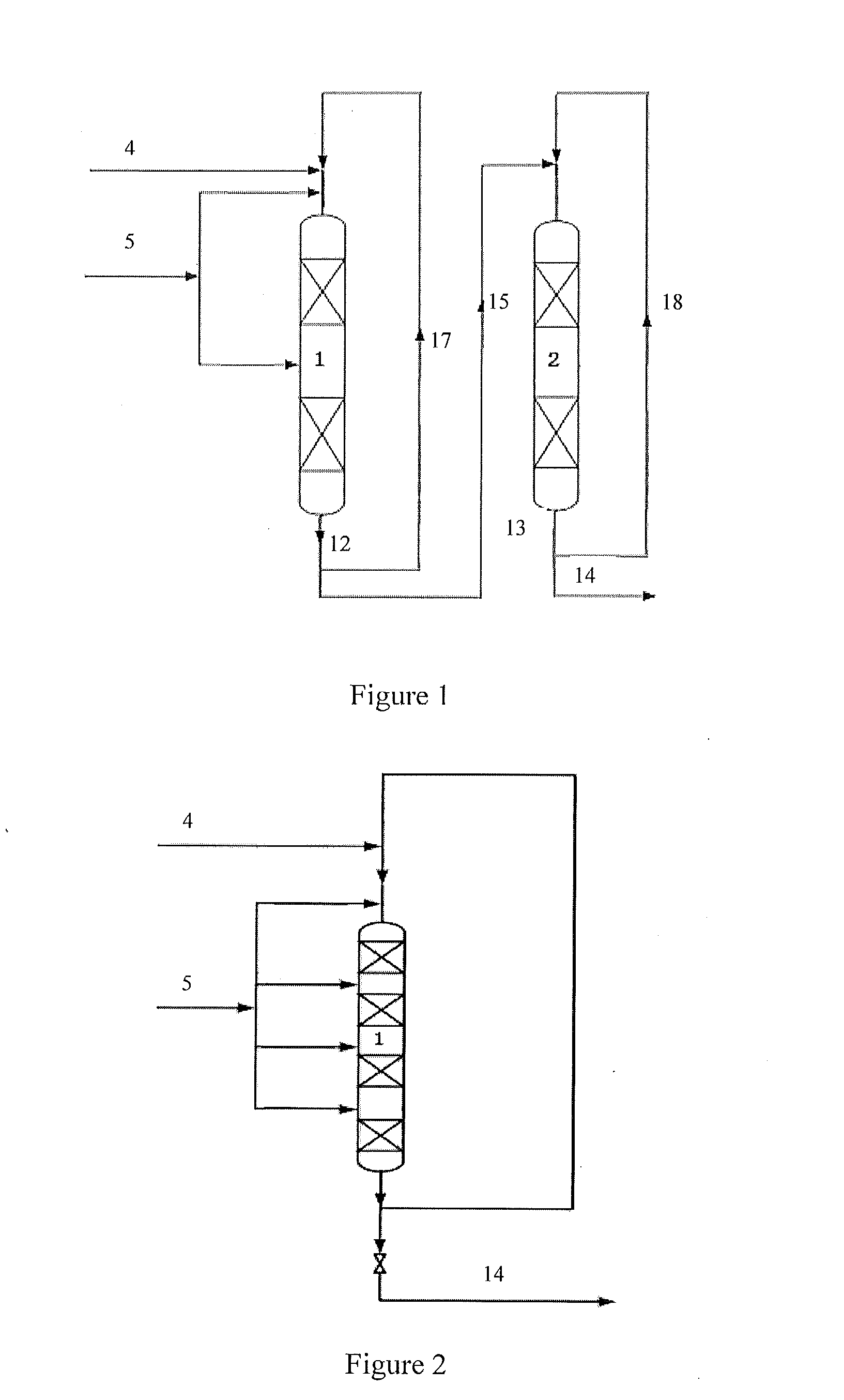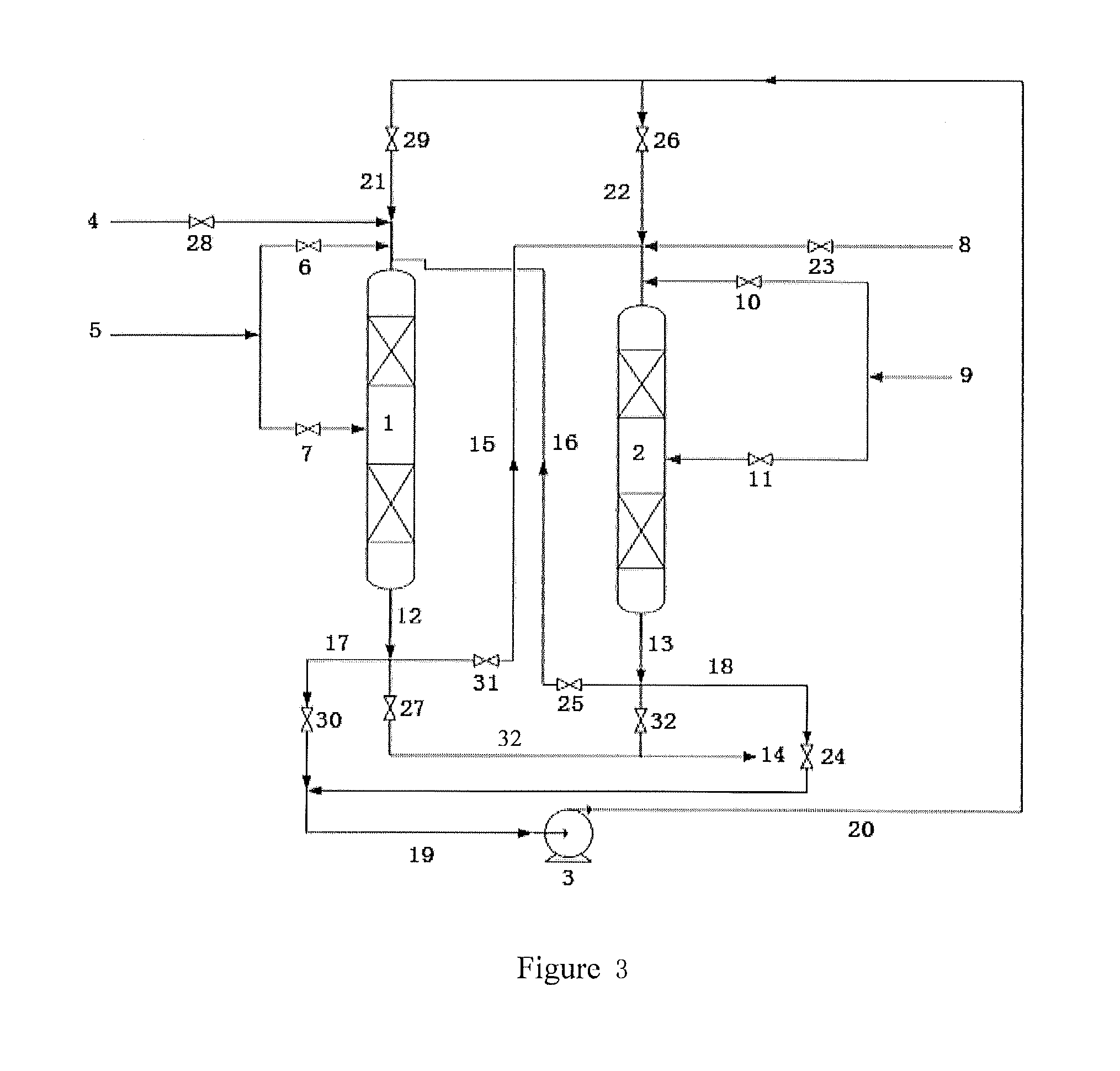Method for producing isopropyl benzene from benzene and propylene
a technology of isopropyl benzene and propylene, which is applied in the field of chemical processes, can solve the problems of high reaction temperature, high reaction temperature, and high yield of isopropyl benzene from alcl/sub>3 /sub>method, and achieve the effect of reducing the content of n-propyl benzene and lowering reaction temperatur
- Summary
- Abstract
- Description
- Claims
- Application Information
AI Technical Summary
Benefits of technology
Problems solved by technology
Method used
Image
Examples
example 1
[0100]The technology process as shown in FIG. 1 comprises two reactors, namely a first reactor and a second reactor. Each of the reactors comprises two catalyst beds. Each catalyst bed is loaded with 20 g MCM-56 zeolite catalyst.
[0101]The first reactor operates under the operating conditions including a reaction temperature in each of the catalyst beds of 125° C., a reaction pressure of 2.5 MPa, a flow of benzene of 135 g / h, a flow of propylene entering each of the catalyst beds of 20 g / h, a benzene to propylene ratio of 1.8, a weight hourly space velocity of propylene of 1.0 hr−1, a circulating flow of 1050 g / h, and a recycle ratio of 6.
[0102]The second reactor operates under the operating conditions including a reaction temperature in each of the catalyst beds of 115° C., a reaction pressure of 2.5 MPa, a liquid phase space velocity of 4.4 hr−1, and a recycle ratio of 0.
[0103]After continuously operating for 15 days, the reaction results including a 99.99% propylene conversion rat...
example 2
[0104]The technology process as shown in FIG. 1 comprises two reactors, namely the first reactor and the second reactor. Each of the first reactor and the second reactor comprises two catalyst beds. The first catalyst and the second catalyst are the same. Each of the catalyst beds is loaded with 10 g catalyst. The catalyst is prepared according to a method as disclosed in example 3 of literature CN 200410066636.2.
[0105]The operating conditions in the first reactor comprise a reaction temperature in each of the catalyst beds of 120° C., a reaction pressure of 2.5 MPa, a flow of benzene of 84 g / h, a flow of propylene entering each of the catalyst beds of 15 g / h, a benzene to propylene ratio of 1.5, a weight hourly space velocity of propylene of 1.5 hr−1, a circulating flow of 798 g / h, and a recycle ratio of 7.0.
[0106]The operating conditions in the second reactor comprise a reaction temperature in each of the catalyst beds of 110° C., a reaction pressure of 2.5 MPa, a flow of propylen...
example 3
[0108]The technology process as shown in FIG. 1 comprises two reactors, namely the first reactor and the second reactor. Each of the first reactor and the second reactor comprises three catalyst beds. The first catalyst and the second catalyst are the same. Each of the catalyst beds is loaded with 20 g catalyst. The catalyst is prepared according to a method as disclosed in example 3 of literature CN 200410066636.2.
[0109]The operating conditions in the first reactor comprise a reaction temperature in each of the catalyst beds of 135° C., the reaction pressure of 2.5 MPa, a flow of benzene of 220 g / h, a flow of propylene entering each of the catalyst beds of 20 g / h, a benzene to propylene ratio of 2.0, a weight hourly space velocity of propylene of 1.0 hr−1, a circulating flow of 1692 g / h, and a recycle ratio of 6.
[0110]The second reactor operates under the following operating conditions: a reaction temperature in each of the catalyst beds of 105° C., a reaction pressure of 2.5 MPa, ...
PUM
| Property | Measurement | Unit |
|---|---|---|
| Temperature | aaaaa | aaaaa |
| Pressure | aaaaa | aaaaa |
| Frequency | aaaaa | aaaaa |
Abstract
Description
Claims
Application Information
 Login to View More
Login to View More - R&D
- Intellectual Property
- Life Sciences
- Materials
- Tech Scout
- Unparalleled Data Quality
- Higher Quality Content
- 60% Fewer Hallucinations
Browse by: Latest US Patents, China's latest patents, Technical Efficacy Thesaurus, Application Domain, Technology Topic, Popular Technical Reports.
© 2025 PatSnap. All rights reserved.Legal|Privacy policy|Modern Slavery Act Transparency Statement|Sitemap|About US| Contact US: help@patsnap.com



